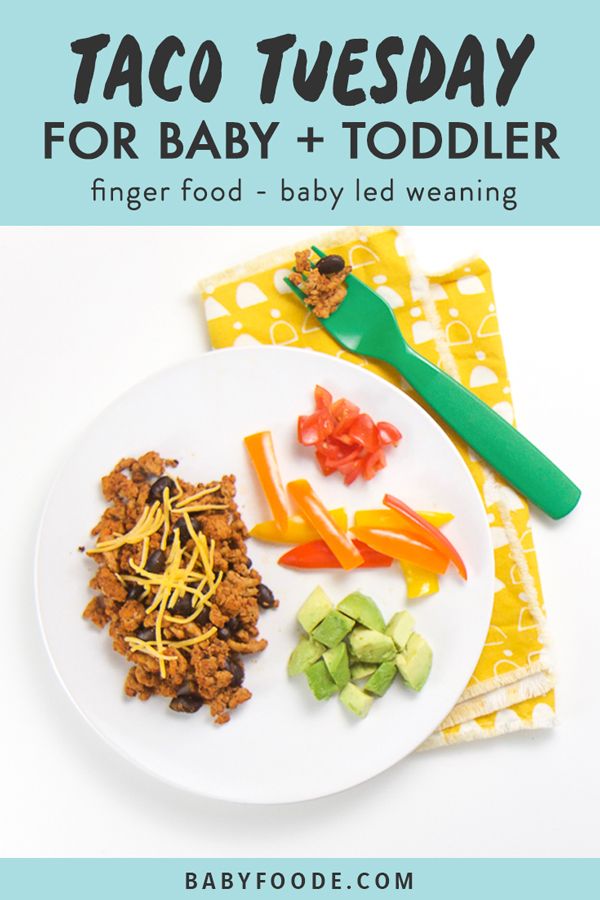What to feed a baby squirrel at home
Everything You Ever Wanted to Know
Squirrels are one of the most entertaining animals to watch. They're so playful and active. And baby squirrels are just adorable. If you hear a high-pitched squeaking sound coming from the ground, look around. You might have found a baby squirrel. If you do see one without its mother around and it is in need of assistance, you may be the only person who can save it, but that should be your last resort. Primarily you should leave it alone, and wait for its mother to care for it. If that isn't an option, the second best action is to find a wildlife rehabilitator to care for the squirrel until it can care for itself - more on that later. Only when the first two actions are unavailable should you consider trying to care for the baby yourself. In that situation I hope this guide serves and a sound basis for your journey.
Did you know? A baby squirrel can't take care of itself until it is 12 weeks old!
What Species is the Squirrel?
The two most common species of squirrel that you'll find in the US are Eastern Greys and American Red squirrels. As the names suggest, you can tell them apart by their coloring. Eastern Greys can be black, gray, or brown with golden hues. They are mostly seen in the eastern US and Canada.
American Red squirrels have a reddish-brown hue on their head and back but a white undercoat. They are also smaller than greys. You can see red squirrels east to west, north to south throughout North America.
Both species develop at about the same rate, and you can care for either species in the same manner.
Identify the Baby Squirrel's Age
Unlike other animals at birth, baby squirrels can't do anything on their own. They require intense care as they develop. You can estimate how old the baby squirrel is by matching its appearance and behavior to these descriptions.
- Newborn to 1 week: pink body, no fur, eyes closed, body measures about three inches long (not including the tail), American red squirrels will have a dark stripe down the middle of their snout
- 2 weeks: fur starting to develop on the back but not on the underside, eyes still closed
- 3 weeks: has grown to about 4 inches long (excluding tail), front lower teeth are coming in, eyes still closed
- 4 weeks: body is approximately 5 inches long, fur growing on the underside, eyes open
- 5 weeks: 6 inches long, top front teeth coming in
- 6 weeks: develops back (cheek) teeth, can sit up on its own and hold food in its front paws
- 7-8 weeks: 7-8 inches long, fur has fully grown in, becoming more active
- 8-12 weeks: learning to climb, still smaller than adult squirrels, can be released outdoors if healthy
Baby squirrels need care for about three months.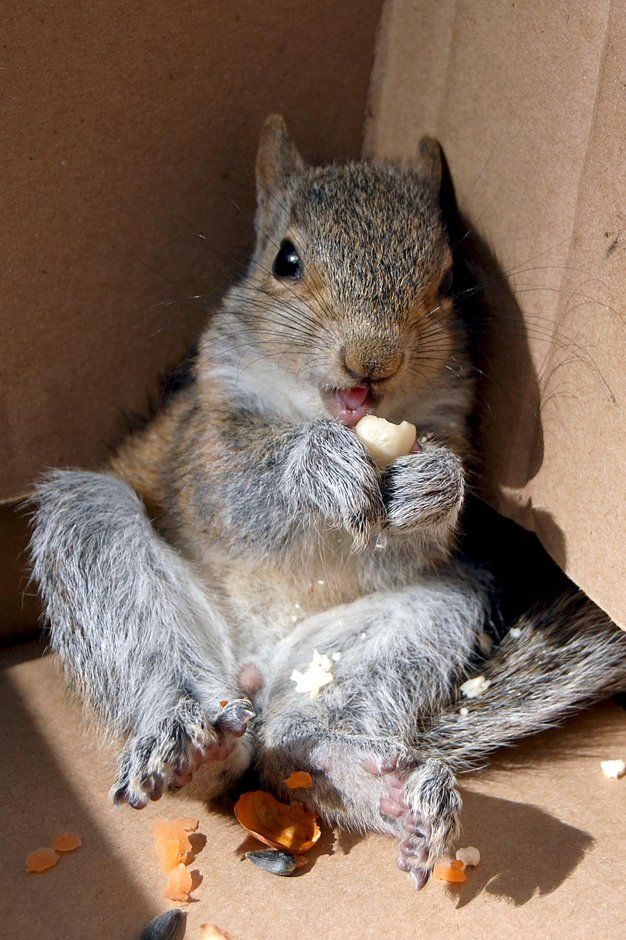 After that, you can continue supporting them by releasing them outside and filling a squirrel feeder for them to use. Place it in an easy-to-reach, easy-to-see location. Providing a squirrel feeder will ensure that they are getting enough nutrition as they learn to forage for their food supply.
After that, you can continue supporting them by releasing them outside and filling a squirrel feeder for them to use. Place it in an easy-to-reach, easy-to-see location. Providing a squirrel feeder will ensure that they are getting enough nutrition as they learn to forage for their food supply.
How do You Know if a Baby Squirrel is an Orphan?
You might find a baby squirrel alone and feel the need to care for it. Just be sure that the mother is no longer able to care for it herself.
If the baby squirrel is injured or looks dehydrated or malnourished, take it. If it is hurt, the mother will not be able to heal it. Depending on the severity of the injury, you or even a veterinarian might not be able to save it, but human care will be more effective than the little that the mother squirrel can do. If your pet dog, cat, or another predator carried it away from its home, the mother might not be able to find it again anyway.
If it is dehydrated or starving, you can tell that the mother has not been able to care for it.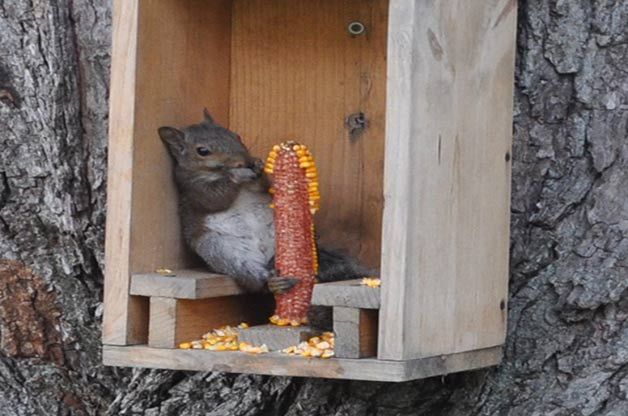 She might have been trapped and removed in another yard, killed by a predator, or died from falling or natural causes.
She might have been trapped and removed in another yard, killed by a predator, or died from falling or natural causes.
If, however, the baby appears healthy, leave it where it is until dark. Monitor it from afar as much as you can to keep it safe, but allow time for the mother to return to it. She might be watching you to make sure it's safe for her to return. She might be creating a new nest and need time to finish it before carrying the baby to its new home. She might be in the process of moving the rest of the litter to the nest and will eventually come back for this one. Finally, if the baby fell from the nest due to high winds or a predator attempting to carry it off, it might take her some time to find it and carry it back to safety.
Did you know? A squirrels teeth never stop growing! They have to gnaw and chew on things to keep their teeth from getting too large.
You can help keep the baby squirrel warm by creating a make-shift nest around it. Place bottles full of warm water under a blanket, towel, or old clothing. Surround the baby with warmth, but do not cover it. Placing the baby in a box, even with the lid open, or covering it with cloth, can make it harder for the mother to see. It also might make her more wary of approaching your setup. You can pick up the baby to position it more comfortably and securely in the nest. Unlike, birds, squirrels will not be bothered by the smell of human oils on their babies. They will shy away from the baby if they are chilled, so keeping them warm is the best you can do for them at this point.
Surround the baby with warmth, but do not cover it. Placing the baby in a box, even with the lid open, or covering it with cloth, can make it harder for the mother to see. It also might make her more wary of approaching your setup. You can pick up the baby to position it more comfortably and securely in the nest. Unlike, birds, squirrels will not be bothered by the smell of human oils on their babies. They will shy away from the baby if they are chilled, so keeping them warm is the best you can do for them at this point.
If you notice the likely mother come to the baby but then leave again, don't be discouraged. She knows where the baby is, has checked on its health, and has likely gone to forage for food or secure a new nest.
Squirrels are only active during the day, so if the mother has not returned by dark, you can assume that she isn't able to. If she could, she would have. She would not leave the baby on its own, even if a new nest were not ready to receive it. She would come back to check on and feed it at the very least.
Correcting Human Disruptions
Before we move on to adopting and caring for the orphan you found, you might be able to reunite it with its mother by changing or reversing some human behaviors. Construction and landscape projects often disrupt animal habitats. There's nothing wrong with maintaining your property, but you might find a litter of baby squirrels separated from their mother when you do so.
Where did you find the baby squirrel? Was it near a tree you recently cut down? Was it under the porch where you recently applied a new lattice? Was it on your roof?
Squirrels do not always create nests in trees . They will burrow or find a warm corner. Nestling up against a house under a dark porch is quite cozy for a squirrel. A leafy gutter also makes a soft bed. If you've recently cleaned out your gutters or closed off an area with new fencing, consider reversing your steps for a time. Make a temporary leaf nest in the gutter and give the mother time to reclaim her young. Open the fence or latticework. If you cut down a tree, don't chop the wood or remove the brush right away. The mother will see that her chosen location is no longer suitable and will make a new nest elsewhere. Once she's moved the babies to a new home, you can continue with your project.
Open the fence or latticework. If you cut down a tree, don't chop the wood or remove the brush right away. The mother will see that her chosen location is no longer suitable and will make a new nest elsewhere. Once she's moved the babies to a new home, you can continue with your project.
Adopting a Baby Squirrel for Care
Being afraid of humans is a partly instinctual, partly learned behavior for squirrels. Baby squirrels who can walk but are alone, will often overcome their fear and approach humans. They've even been known to follow people home or climb up a person's leg. It's an interesting, immensely heartwarming phenomenon, but it also shows how desperate the baby is. If they are willing to approach you for possible help, they have apparently been left alone for some time. Although mobile at six weeks old, a squirrel relies upon and stays with its mother until it is about 12 weeks old.
Younger babies cannot even begin to walk or gather food for themselves.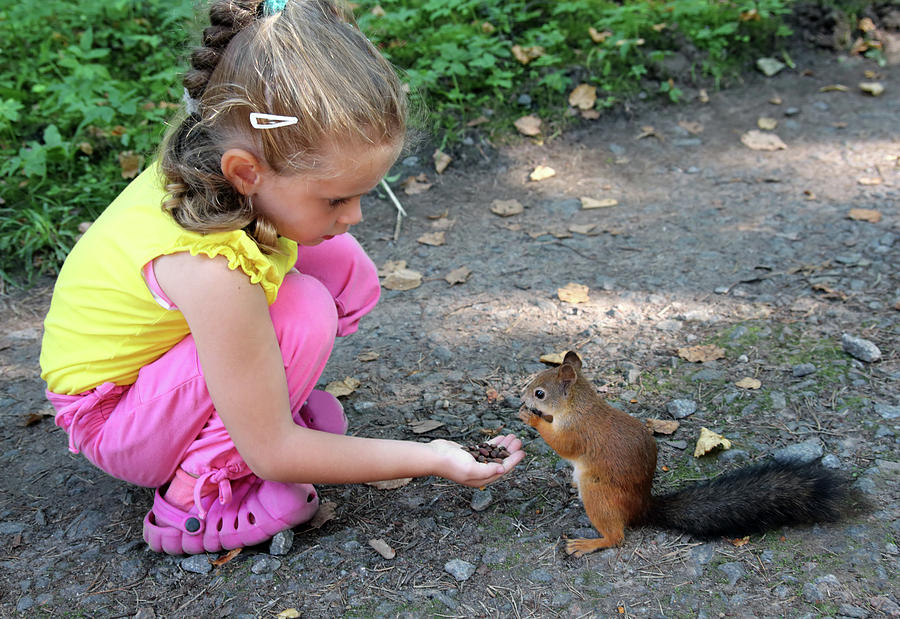 Most of the time, the babies that you find will be newborns who haven't yet opened their eyes. Baby squirrels are docile enough that there is little danger of them biting you. They will generally accept you picking them up, handling them, and feeding them. If you have the time, caring for a baby squirrel can be an exceedingly rewarding experience.
Most of the time, the babies that you find will be newborns who haven't yet opened their eyes. Baby squirrels are docile enough that there is little danger of them biting you. They will generally accept you picking them up, handling them, and feeding them. If you have the time, caring for a baby squirrel can be an exceedingly rewarding experience.
Initial Care: Checking for Injuries and Bathing
The first step is to check the baby squirrel for injuries.
1. Using a soft cloth, gently pick up the baby and carry it indoors to a well-lit room with a sink. You can also fill a bucket or large basin with warm water if you don't want to take it inside or into the central living area of the house.
2. Caress the baby's face. It should move its head from side to side. If it doesn't, the baby might have a broken neck or spinal injury.
3. Gently squeeze each paw and the tail. Watch how the baby reacts. It should pull away from the pressure. If it doesn't, or if the movement seems unnatural, it might have a broken leg or tail.
If it doesn't, or if the movement seems unnatural, it might have a broken leg or tail.
4. Next, mix some dish soap in warm water and bathe the baby. Use a soft washcloth to clean any cuts and brush away debris or parasites. Be sure to wash the nose and face. Clear the nostrils for natural breathing. Using a soft, wet cloth simulates a mother's tongue grooming the baby.
5. Lastly, use a Q-tip to stimulate the baby squirrel's genital area and anus. Doing so is often necessary for baby animals to release waste and would be a regular part of a mother's care. It might take a couple of minutes' worth of stimulation before the baby pees. You will need to keep stimulating the area until it is finished to ensure the baby empties its bladder.
If a male squirrel does not start urinating at least a little amount within a couple of minutes, check for a swollen penis. Baby squirrels suck on any nipple-like appendage and can sometimes cause a brother's penis to swell and scab over. If this is the case, soak the lower part of the squirrel's body in warm water for about 20 minutes to soften the scab. You can then wipe the scab off with the washcloth and allow it to release its urine.
If this is the case, soak the lower part of the squirrel's body in warm water for about 20 minutes to soften the scab. You can then wipe the scab off with the washcloth and allow it to release its urine.
If the baby has been alone for a significant amount of time, the urine might be more brown than clear, showing its degree of dehydration.
If you suspect broken bones, find deep lacerations, or unable to stimulate urination, call a veterinarian for help. Some vet offices see small rodents. Others can direct you to a wildlife specialist who might be able to help. If your cat caught the squirrel, it would need antibiotics to fight off infections received from the cat. Just as a cat scratch or bite can irritate your skin, feline germs and bacteria can be toxic to small animals.
Secondary Care: Warming
The warm bath will have helped heat the baby up. It will drop again, though, as it dries. To keep the baby's core temperature up, place it in a box with a blanket bed. Cover the baby, even its head, and put the box on a heating pad or next to a heater. Check on the baby every 15 minutes. If you found more than one baby squirrel, place them next to each other for comfort and to share body heat. The presence of a littermate will help the squirrel feel safe and relaxed.
Cover the baby, even its head, and put the box on a heating pad or next to a heater. Check on the baby every 15 minutes. If you found more than one baby squirrel, place them next to each other for comfort and to share body heat. The presence of a littermate will help the squirrel feel safe and relaxed.
You can also hold the baby squirrel cupped between your hands or let it snuggle against your body for warmth.
Rehydrating
Rehydration is often more important than food during the first day of care. You can use Pedialyte or mix half a teaspoon of salt and half a teaspoon of sugar in two cups of water and feed it to the squirrel with a feeding syringe. Pedialyte is more efficient than the water mixture, so if you can pick some up at the store, do so. Look for the unflavored variety, but if you can't find it, squirrels will generally drink the flavored mixes as well.
A feeding syringe does not have a needle, but an open, cone-shaped top. It is often used to administer oral liquid medications to animals. You can dip the top into the liquid, pull back on the plunger to fill the vial, and then press the plunger forward to drop or squirt the liquid into the squirrel's mouth.
You can dip the top into the liquid, pull back on the plunger to fill the vial, and then press the plunger forward to drop or squirt the liquid into the squirrel's mouth.
To help the squirrel drink, place it upright in a sitting or position or as if it were standing on its hind legs. You can do this by mounting a blanket or towel around it or holding it in your hand. You don't want to give it liquid lying on its back as it might choke. If the baby squirrel is particularly wiggly, you might need to hold it to keep it still. It might also be helpful to use cotton gloves when handling the squirrel and to avoid washing them unless they become soiled with waste material. The gloves will absorb the squirrel's scent and help it to feel safe and calm.
Administer the liquid slowly. A squirrel that drinks too fast can choke and allow fluid to enter its nasal passages. If the liquid starts coming out of its nose, turn it upside down to let the liquid to drain out entirely through the nose rather than flowing down into its lungs.
You'll want to go slowly at first as the baby squirrel might be too weak to swallow much at a time. It might also be too small to drink very much during one sitting, so continue to offer the liquid about every half hour. After every drinking period or at least once per hour, re-stimulate the squirrel's genitals. When the urine appears light yellow or clear, you can move on to more nutritious foods.
Clean the baby's face and neck with a wet, warm cloth after every drinking period as the salt and sugar water can leave a sticky residue.
What if the Squirrel Won't Drink?
Most animals need to feel safe and comfortable before they can turn their attention to eating or drinking. It's part of their survival instinct. Be safe first; then eat when they can. If your baby squirrel doesn't seem to want to drink, try the following.
- Hold the squirrel upright in hand towel to keep it warm.
- Stimulate its genitals with a wet, warm cloth to see if it needs to urinate before taking more liquid.

- Make sure you are in a quiet environment.
- Dim the lights to simulate a dark and hidden nest.
- Hold it close to your face and whisper to it so that it gets used to your scent and learns that you're not a danger.
- Warm the Pedialyte or salt and sugar water to room temperature.
- Stay calm and patient. Don't try rush or the squirrel will sense your unease.
Once you establish the right mood and bond with the baby squirrel, it will usually take liquid from you without hesitation.
What to Feed a Baby Squirrel
If the baby squirrel has done well with the syringe, you can graduate to a feeding bottle with elongated nipples. You might need to poke holes in these nipples. To do so, just pierce the nipple with a needle or toothpick and then boil the nipple with the needle or toothpick still in the hole. Remove the nipple from the boiling water, let it cool, and then remove the piercing instrument. The hole will be permanently formed.
Adult squirrels aren't too discerning about what they'll eat , but a baby squirrel's digestive system is sensitive. Feeding a baby squirrel the wrong thing could cause diarrhea and dehydration or, worse, send their body into shock. Never feed them human formula, cow's milk, or milk substitutes. If you aren't sure on what baby squirrels eat, the best feeding solution you can buy is puppy milk. Esbilac and similar products are available at veterinary offices and pet food stores. Look for the powdered version and then slowly introduce the solution to the baby squirrel's system in the following stages.
- 1. Mix one part powdered puppy milk in three parts Pedialyte or salt and sugar water.
- 2. Mix two parts puppy milk in two parts liquid.
- 3. Increase to three parts puppy milk to one part rehydration solution.
- 4. Continue with undiluted puppy milk.
Stay at each stage for two feedings and offer the solution every two and a half hours.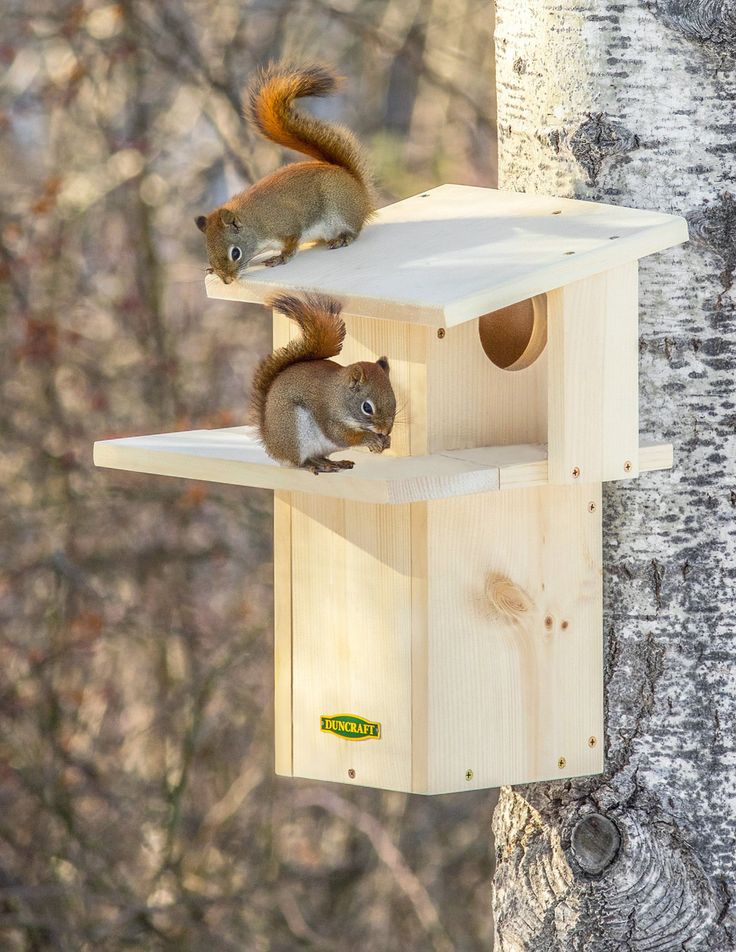 It would be helpful to wake up once during the night to provide the baby squirrel an additional feeding time. Be sure to follow the directions on the puppy milk packaging so that powder fully dissolves. Warm your mixture to room temperature to make it palatable to the baby squirrel and to avoid chilling it.
It would be helpful to wake up once during the night to provide the baby squirrel an additional feeding time. Be sure to follow the directions on the puppy milk packaging so that powder fully dissolves. Warm your mixture to room temperature to make it palatable to the baby squirrel and to avoid chilling it.
The amount that you should feed a baby squirrel during each period will depend on its age and species. Keep in mind that a malnourished squirrel will probably not be able to take a full feeding until it regains its strength.
- Newborns to 1 week: Eastern greys .75cc-1.25cc every 2.5 hours / American reds .5cc every 2.5 hours
- 2 weeks: Greys 2.5-3cc every 3 hours / Reds 1-1.5cc every 3 hours
- 3 weeks: Greys 4-5.5cc every 3 hours / Reds 1.75-2cc every 3 hours
- 4 weeks: Greys 6-9cc every 3.5 hours / Reds 2-2.5cc every 3.
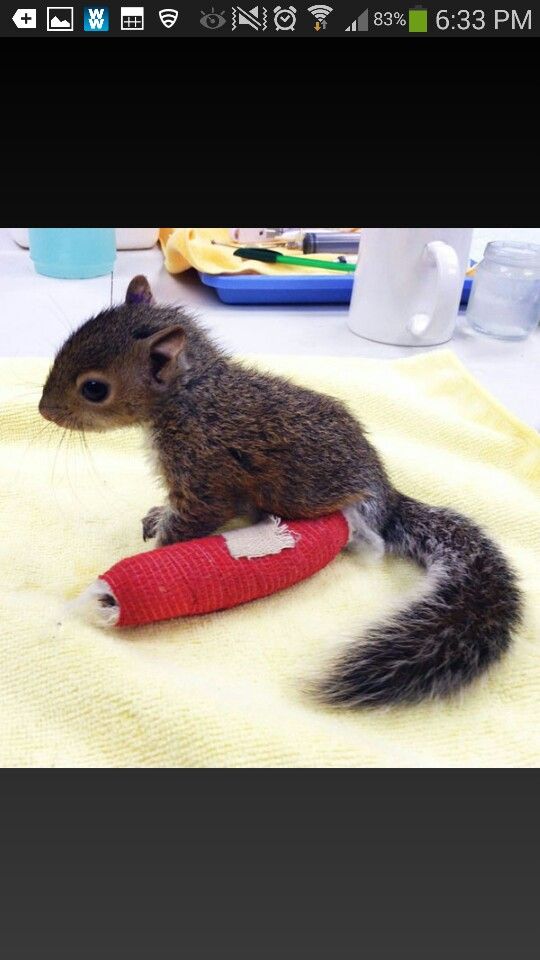 5 hours
5 hours - 5 weeks: Greys 10-12cc every 4 hours / Reds 3-4cc every 4 hours
- 6 weeks: Greys 12-14cc every 4 hours / Reds 4-6 cc every 4 hours
- 7 weeks: Greys 14-16cc every 8 hours / Reds 7-8 cc every 8 hours
- 8-12 weeks: Greys 16-18cc every 12 hours / Reds 9-10 cc every 12 hours
Remember that American red squirrels are smaller than Eastern greys and so will need much less food. You will also need to continue stimulating urination and washing the face and neck after each feeding.
Judging Digestive Health
Pay attention to the baby squirrel's stool. When it is dehydrated, the stool might be dark brown or black and will often be quite loose. After it begins digesting the puppy milk, it should turn to yellowish-brown pellets. If the stool appears very pale, add plain water to the mixture to dilute the milk solution.
If the baby's stomach seems bloated, soak its lower body in warm water for half an hour and massage its abdomen. Skip a feeding period and administer only Pedialyte or salt and sugar water. If the bloating does not dissipate within 24 hours, call a veterinarian or wildlife specialist to check for parasites.
Contact Your Local Wildlife Service
After you have done your best to clean, warm, feed, and treat injuries, the next best step is to call your local wildlife authority. Park services often have nature centers where they can house and rehabilitate injured or orphaned animals. The staff and volunteers of a nature center will have the time and resources to best care for your orphaned squirrel. You would also be free to visit and check up on the little one's progress. And a wildlife shelter might already have another baby squirrel with which they can socialize your rescue.
Guidelines for Ongoing Care
If you are committed to caring for the baby squirrel yourself, here are a few essential guidelines to follow.
1. A squirrel is not a pet. You should not approach caring for a baby squirrel expecting it to become a permanent pet. Once it is mobile, it will be mobile. It will either tear around your house like it does the trees outside or it will be miserable while confined to a cage. Without enough area to expend energy, a caged squirrel will become violent. Even raised from birth, a squirrel cannot be domesticated. It is not an indoor animal.
2. A squirrel should be socialized with other squirrels. If you found one orphaned squirrel, there's a chance that the rest of the litter is nearby. Do your best to walk your yard for a couple of days, listening for little squeaks. Raising the squirrel with others will help it learn how to play and behave appropriately. They will watch each other and pick up new skills.
3. A squirrel should not socialize with other pets or people. For the sake of its outdoor survival, a squirrel needs a healthy fear of people and other animals. You will need to feed, bathe, and play with it to help it develop, but do not let others do so. It will recognize you as its “mother” while retaining its cautious attitude toward people who are not you. Keep it in a room by itself so that other people are not likely to pass its cage. Do not let it become familiar and friendly with your dog or cat. If they have a positive relationship with your pet, they might not know to run when they encounter another of the same species outside.
You will need to feed, bathe, and play with it to help it develop, but do not let others do so. It will recognize you as its “mother” while retaining its cautious attitude toward people who are not you. Keep it in a room by itself so that other people are not likely to pass its cage. Do not let it become familiar and friendly with your dog or cat. If they have a positive relationship with your pet, they might not know to run when they encounter another of the same species outside.
Continued Feeding
You can continue with the puppy milk according to the age and breed guidelines above, but consider thickening it with whipping cream or plain yogurt to add fat content. If the baby squirrel is very young or if you intend to nurse more baby squirrels, you can order specially made squirrel milk from Fox Valley Animal Nutrition. Some pet stores will carry their products, but they are more of a specialty item, not in demand on most shelves.
It will be tempting to give the squirrel as much milk as it wants, but be careful to follow the guideline.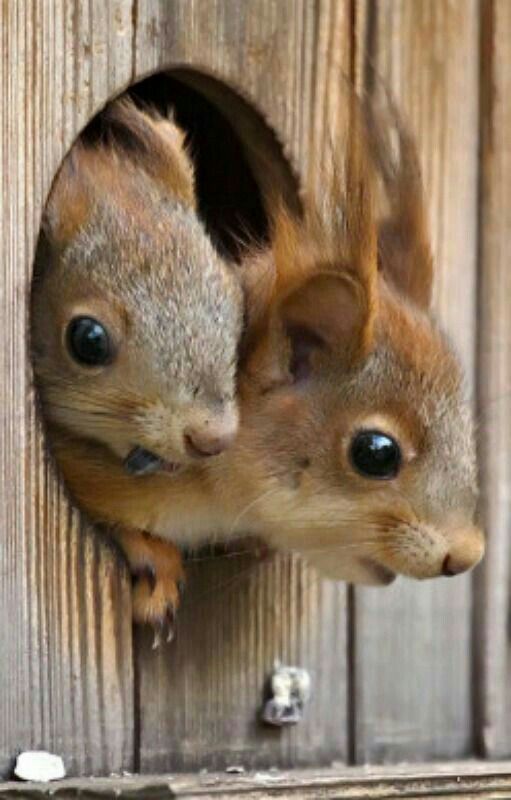 Some animals do not know their limits and will overheat, giving themselves bloated stomachs, diarrhea, or other digestive issues.
Some animals do not know their limits and will overheat, giving themselves bloated stomachs, diarrhea, or other digestive issues.
Once they are doing well and have reached a certain age, you can also introduce solid food into their diet. You do not need to regulate solid food once the squirrel is doing well. Allow it to eat as much as it wants.
- At three weeks, you can provide rat and mice rodent block for them to chew on.
- At six weeks, add unsalted sunflower seeds and raw fruit, such as apple slices, grapes, and banana.
Creating a Habitat
The “nest” that you make for your squirrel will need to change as it grows.
Stage 1: At first, a baby squirrel isn't very mobile so that a small box will do just fine. Lay blankets or old towels in the bottom of the box and place it in a dark, quiet room over a heating pad or next to a heater. Poke holes in the box for air circulation and close the lid. Recover the baby squirrel after every feeding or handling time.
Make sure that the cloth does not have loose strings or holes in which the baby squirrel could get caught. Wash or change the materials once a day with unscented detergent. Do not use dryer sheets or other scented additives. It's best to let the squirrel's scent permeate the fabric so that it feels safe without distracting smells. Strong odors can also irritate a baby squirrel's sinuses and lungs.
Do not use woodchips like you would in other rodent habitats. The chips will be too rough the baby squirrel's skin, too aromatic for its lungs, and will not provide enough insulation to keep it warm. You can move to woodchips in Stage 3.
When the baby is about three weeks old, they will start developing their lower front teeth. To help them teethe and to begin introducing solid food into their diet, place a few pieces of rodent block in their box. It is a small pellet-shaped food that will provide all the nutrition the squirrel needs. Choose rodent block made for mice and rats rather than hamsters and gerbils to match the squirrel's needs more closely.
Stage 2: When the baby reaches five weeks and its eyes open, it will want to be more mobile. Move it to a larger box, dog carrier, or rodent cage. If the holes in the pet carrier or cage are large enough for the squirrel to squeeze through, cover the panels with a smaller material, such as bird netting, chicken wire, or old window screens.
Add a hanging water bottle to the side of the habitat and give the squirrel a mineral stone for small mammals. The mineral stone is a salty treat they will lick to gain essential minerals, such as calcium and iron.
Stage 3: At eight weeks old, the baby squirrel is very energetic and nearly ready to be released. It will need a large cage. With sturdy wiring that it can't chew through. A large dog crate is the minimum size you will want at this stage.
Lay a tarp under the cage and fill the bottom with cloths or woodchips. Keep in mind that you will still need to change this bedding out every day. You'll also want to add climbing materials, such as tree branches or hanging dowel rods. You can push dowel rods through the holes of the cage and secure them in place by tying the ends together or placing nuts and washers on the ends. You can create a hanging or pedestal nesting box to simulate how they will live outdoors.
You'll also want to add climbing materials, such as tree branches or hanging dowel rods. You can push dowel rods through the holes of the cage and secure them in place by tying the ends together or placing nuts and washers on the ends. You can create a hanging or pedestal nesting box to simulate how they will live outdoors.
Place this cage outside or in an open garage for at least a few hours per day to help them acclimate to outdoor life. Bring them back inside or close the garage at dusk to keep them safe from lurking predators. Continue this pattern for three to four weeks.
Playtime
As with human children, play is learning. You will need to handle, stimulate, cuddle, and play with the baby squirrel to help it learn how to use its muscles. You will also want to place plenty of “toys” in its box or cage. Squirrels are not picky. They will explore and play with anything, but for their own good, include natural items. Once they have fur as physical protection against abrasions, you can place sticks, bark, woodchips, leaves, nuts, pinecones, grass clippings, sod, dirt, or feathers in the box.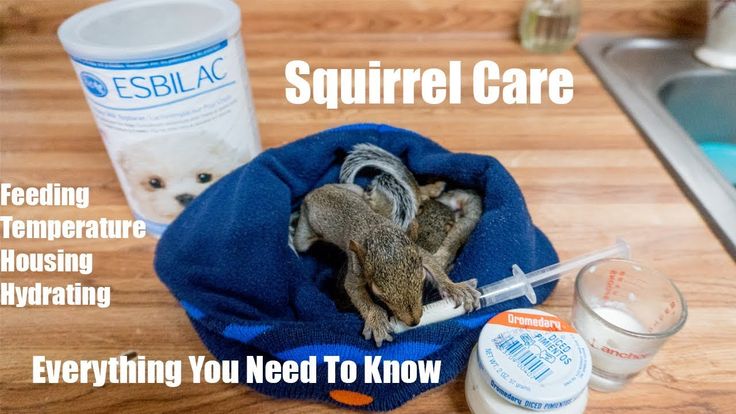 When you release them back outside, they will be familiar with these natural items.
When you release them back outside, they will be familiar with these natural items.
Release
At 12 weeks old, your healthy baby squirrel is ready to be released outside. Take the nesting box that you made and nail it in the crook of a tree. Try to do this when it is warm and dry for a couple of days so that you can stock the box with towels for the squirrel to hide or nestle in.
Bring the cage outside and set it door-open next to the tree. Back away and wait for the squirrel to come out. Some squirrels are more adventurous, some more cautious. Eventually, they will leave the cage and, most likely, climb the tree. They will see their nest box and know that they can use it as their new home. Remove the cage and continue monitoring their explorations.
You will want to fill a food and water bowl some distance from their nesting tree. Doing so will ensure that other animals attracted to the food are not immediately made aware of the nesting box as well. You can also use a squirrel feeder to ensure it is getting enough nutrition.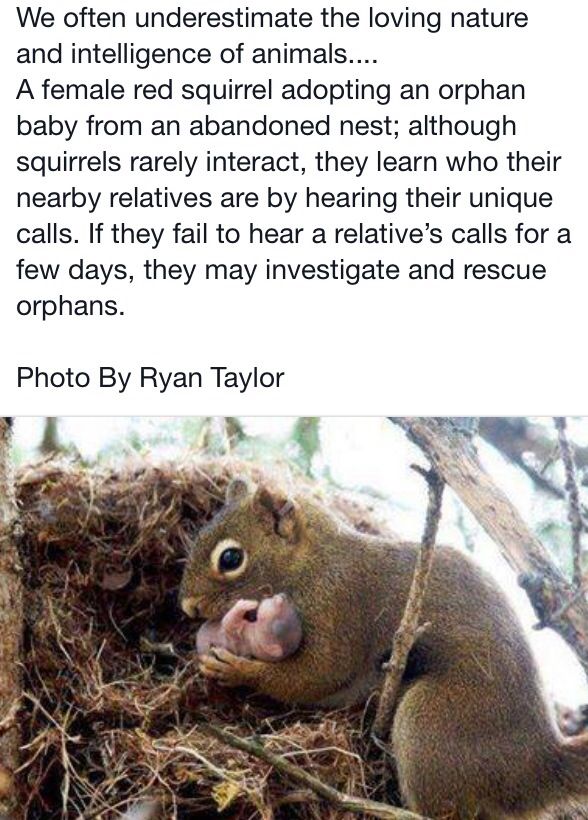
You'll eventually lose track of your squirrel friend, but don't be surprised if it comes to visit you out in the yard once in a while. If it spent three or more weeks with you, it will remember you and know that you are someone to be trusted.
Baby Squirrel Facts
Here is a quick summary of what you've read for easy reference.
- Baby squirrels make a high-pitched squeaking noise.
- Eastern grey squirrels are black, gray, or brown.
- American red squirrels are reddish-brown with a black stripe on their nose.
- Baby squirrels need to be taken care of until they are 12 weeks old.
- They are pink and bald at first.
- Baby squirrels need Pedialyte and puppy milk to grow.
- You can feed a baby squirrel with a bottle and it will bond to you as its “mother.”
- You have to keep baby squirrels warm and massage their genitals to make them pee.
- At three weeks, they start developing teeth.
- At four weeks, they open their eyes.

- At six weeks, baby squirrels can eat seeds, nuts, and fruit.
- At eight weeks, they start learning how to climb.
- Even after you release it, a baby squirrel will know and remember you.
Baby Squirrel Care - Formula Feeding
Once the baby squirrel is warm and has had some hydration fluid, you are ready to start feeding. What do baby squirrels eat? Formula, also called “milk replacer.”
Formula Recommendations for Different Ages
- Pinkies less than 10 days old: Homemade Goat Milk Formula for 10 days, then switch to either Esbilac Puppy Milk powder, or Fox Valley 32/40, then switch to Fox Valley 20/50 by 4 weeks old.
- 10 days old to 2 weeks old: HGMF or Esbilac until you receive your Fox Valley 32/40, then switch to Fox Valley 20/50
- 3 weeks and older: HGMF or Esbilac until you receive your Fox Valley 20/50
HGMF works the BEST for tiny pinkies in our experience.
Homemade Goat Milk Formula Plus (HGMF+):
- 3 tablespoons goat milk
- 3 tablespoons plain yogurt
- 2 tablespoons heavy cream
- ½ egg yolk
You can buy goat milk at most grocery stores. If you can't find fresh goat milk, you can use canned or powdered. Note: Canned or powdered milk must be mixed with water FIRST according to label directions. Do not use HGMF+ for more than two weeks at a time as it is not fully fortified with vitamins/minerals. If you can't find goat milk, double the yogurt (6 tablespoons).
Be alert for bloating, diarrhea or constipation, and take immediate action. See page 5, "Common Problems."
Make sure formula is very, very warm. Baby squirrels will not drink enough formula if it is only slightly warm....they will starve to death!
Mixing, Feeding and Storing Formula
- When using a powdered formula, mix with very warm water.
 Allow the formula to sit for a while (or overnight) in the fridge so it dissolves.
Allow the formula to sit for a while (or overnight) in the fridge so it dissolves. - Before each feeding, stir the formula and draw up enough syringes of cold formula for the feeding.
- Microwave a coffee mug of water until it is hot (but not boiling). Then dunk the filled syringes in the hot water. They will take around 30 to 60 seconds to heat up.
- Take one syringe out, tilt it to mix the formula within the syringe, and test it on your wrist before feeding (should be VERY warm).
- If the formula in your syringe gets too cool while feeding, re-dunk it and pull out another syringe.
- Discard made-up formula after 24 hours.
7% Feeding Rule:
Weigh the baby on a scale in GRAMS; multiply that number by 7% (.07) and that will be the number of cc's (or ml's) to feed per feeding. You may need to start with smaller feedings at first, and work up to 7% after a few feedings, especially for emaciated babies.
Do not overfeed or increase feeding amounts too quickly! Baby squirrels will overeat if you let them and get diarrhea or bloating, which can be fatal. Weigh the baby every day at the same time to determine if they are gaining or losing weight and adjust the formula amount as needed.
EXAMPLE:
Squirrel weighs 50 grams
50 x 7% = 3.5 (Using a calculator, it's 50 x .07 = 3.5)
So you feed 3.5 cc's per feeding
Potty Time
A baby squirrel less than 5 weeks old will need to be stimulated to poop and pee. Use a warm, wet cotton ball, Q-tip, the corner of a Kleenex, or your finger, and flick lightly across the genital area. Some babies may need stimulation before and after feeding. A few may eat better if you potty them in the middle of a feeding.
NOTE: Baby squirrels need lots of attention and affection, especially if he has no siblings. This will not hinder the release process in any way. Squirrels bond strongly with their human caretakers, but they do not "imprint" on humans like other wildlife. When it's time for release, their wild instincts will kick in just fine.
Squirrels bond strongly with their human caretakers, but they do not "imprint" on humans like other wildlife. When it's time for release, their wild instincts will kick in just fine.
Don’t use cheap syringes that stick; use quality o-ring syringes and go slow to avoid aspiration!
PRINT THIS GUIDE
How to save the squirrel? | Animals
That baby squirrel was found in the forest, fell out of the nest - a small, defenseless red-haired miracle that immediately trusted the man. He lived in a light bulb box at work and in a hat at home. He slept all day and sometimes woke up to eat. And he ate white bread soaked in goat's milk. And at the same time he champed and smacked his lips so deliciously that we also wanted to eat bread in milk and in a box - to sleep.
Since then, a struggle has begun with a wild desire to have a squirrel at home and the understanding that no one will fall out of the nest especially for me. Asking myself the question: tell me honestly - why do you need her, I knew only one answer - "she is not like everyone else."
Asking myself the question: tell me honestly - why do you need her, I knew only one answer - "she is not like everyone else."
I will say right away: I have a squirrel. There were even two of them. I bought one from a dealer and buried it almost immediately. The squirrel was sold to me as a tame squirrel from an aviary, but in fact it was caught from nature and never reconciled to captivity. Although it was bought for a lot of money, the squirrel did not appreciate it. After the solemn funeral at home, we got a currency - one dusya (equivalent to 200 USD). That is, a flat-screen TV in the kitchen costs 3 dusi. But my cosmetics for a month - half a day, etc.
And the second squirrel appeared when we didn't expect it at all. Well, it’s not the season, the squirrels don’t fall out of the nests, they have already grown, and therefore we decided to wait for spring. The rut of the squirrels is about to begin, and then we will find it in the forest and start it. Even my husband was inspired, the desire was already mutual. In the end, we ... adopted the squirrel 3 days after the decision to “wait” was made. True, a week later we made another amendment - we adopted a squirrel. Here is such a zigzag of fate: there was Kuzey for half a year, and she became Kuzyusha.
Even my husband was inspired, the desire was already mutual. In the end, we ... adopted the squirrel 3 days after the decision to “wait” was made. True, a week later we made another amendment - we adopted a squirrel. Here is such a zigzag of fate: there was Kuzey for half a year, and she became Kuzyusha.
Squirrels are born 2-3 times a year: in spring, autumn and sometimes in winter. The latter, as a rule, rarely survive, unfortunately. Blind and bald are born. Eyes open at 10-12 days. On the 30th day, a squirrel with fur already looks out with interest from the gain (nest). And, it happens that it falls out of it by negligence.
If you, while walking in the forest, park, garden, etc., suddenly find an exhausted, frightened, bald or not very little squirrel, help him survive.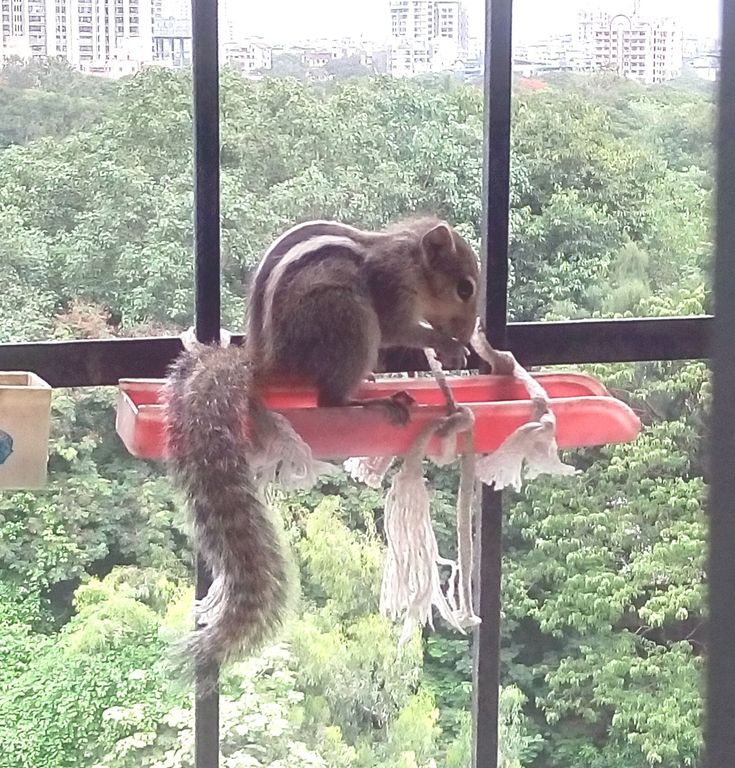 It's not very difficult. But it's so important to him!
It's not very difficult. But it's so important to him!
So, you found a squirrel and brought it home:
1. The squirrel needs to be warmed up: it can be your hands, hat, handkerchief, pocket. Even hot water in a bottle next to it will do.
2. The squirrel needs to restore the water balance, and not try to feed it right away: put some water into the pipette (not from the tap, it's dangerous!). He needs to start drinking. Remember, squirrels are at risk: they have a very weak intestine and with improper feeding or drinking, the struggle for life goes on for minutes.
3. Then try to feed him. It is advisable to offer him goat's milk or a milk replacer for kittens (sold in pet stores). If the squirrel is already grown up, then white bread soaked in goat's milk is what you need. Cow's milk is contraindicated for squirrels! If it is not possible to feed other than cow, dilute it with water 1: 1. Remember that a very small squirrel needs to be fed like a baby - every 2-3 hours.
If the squirrel is already grown up, then white bread soaked in goat's milk is what you need. Cow's milk is contraindicated for squirrels! If it is not possible to feed other than cow, dilute it with water 1: 1. Remember that a very small squirrel needs to be fed like a baby - every 2-3 hours.
My friend used a pipette to feed both at home and at work (he is tiny, he slept in his own box most of the time). From a pipette - drop by drop so that it does not choke. If you hold him in your hands, he will quickly understand that you and your smell are a source of delicious treats. Consider that from now on and forever the squirrel is a friend.
If the squirrel is already grown enough to eat solid food, offer him pine nuts, only in the shell (less likely that the nuts were affected by some kind of fungus that is dangerous for the squirrel), seeds (only natural in the shell, not fried), twigs with leaves (apple, pear, willow), acorns, apple, carrot.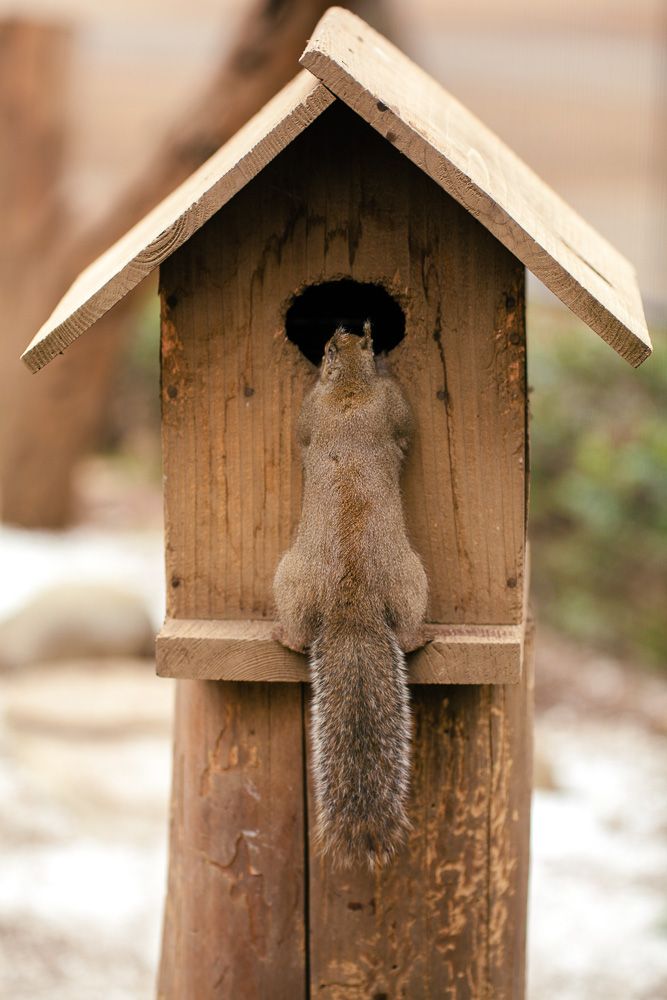 In general, you can only offer a squirrel what he could find in nature. Sugar cookies from the hands of compassionate citizens in the parks, of course, do not count. And remember that his teeth grow all his life, he must grind them on solid food. It is enough to feed a grown and grown squirrel 2 times a day.
In general, you can only offer a squirrel what he could find in nature. Sugar cookies from the hands of compassionate citizens in the parks, of course, do not count. And remember that his teeth grow all his life, he must grind them on solid food. It is enough to feed a grown and grown squirrel 2 times a day.
4. Designate a place for it, eg in a box. In no case should there be cotton wool, the squirrel can get tangled in it or suffocate. It is very good to put a terry towel as a bedding. If the squirrel has grown up and you are afraid to leave him at home alone on a free range, you will have to purchase a cage. Remember: the higher the cage, the better the squirrel. About 50x50x100 is fine, but it's better if you let him run around under supervision, and not just keep him in a cage.
The cage must have fresh water (I repeat, not from the tap!). Secure the bowl or drinker so that the squirrel does not turn the water upside down. In no case do not lay the newspaper on the bottom, it is better without anything: ink on printed publications contributes to the accumulation of lead in the animal's body. Also provide a house where the squirrel can rest and another house where she will make stash for a rainy day. Lump chalk is needed for the formation of bone tissue, give a mineral stone, vitamins for rodents.
Secure the bowl or drinker so that the squirrel does not turn the water upside down. In no case do not lay the newspaper on the bottom, it is better without anything: ink on printed publications contributes to the accumulation of lead in the animal's body. Also provide a house where the squirrel can rest and another house where she will make stash for a rainy day. Lump chalk is needed for the formation of bone tissue, give a mineral stone, vitamins for rodents.
5. If, God forbid, your little squirrel has loose stools, help him. Brew oak bark (not much) and put it in a cage for half a day. You can give smects: we gave them directly smeared on the finger - the squirrel licked it himself. And most importantly - remove all fruits, only dry food.
In general, the little squirrel is a wonderful animal, but it likes to pull the blanket over itself. Try to teach him to live by your rules from childhood. Squirrels have the intelligence of an adult dog, they are just very small. Remember that the squirrel should feel at home in his rest house, like in a fortress: do not climb there, the squirrel cleans up there by herself - throws out the nut shells, spreads her bedding. By the way, cleaning directly in the cage at least 2 times a week will ensure that you don’t smell any (I just replace the bedding at the bottom of the cage).
Try to teach him to live by your rules from childhood. Squirrels have the intelligence of an adult dog, they are just very small. Remember that the squirrel should feel at home in his rest house, like in a fortress: do not climb there, the squirrel cleans up there by herself - throws out the nut shells, spreads her bedding. By the way, cleaning directly in the cage at least 2 times a week will ensure that you don’t smell any (I just replace the bedding at the bottom of the cage).
The squirrel, which we fed with the whole team, has been living with my friend for almost a year. He went to work with her, sitting at her place. in a jacket pocket. And he is so tame that he can even kiss on the lips. But this did not stop him one day from running out into the street from the fifth floor of a high-rise building. Contrary to all forecasts, we still removed him, trembling, from the tree with the help of firefighters. The firefighters had to make "alcohol intragastric compresses" - they were bitten very badly.
If you are lucky enough to find a baby squirrel in the forest, save him, I beg you, do not pass by, he is so defenseless and so wonderful!
Tags: squirrel, enthusiasm, pets, animals
Care and maintenance of squirrels at home
Squirrels are very intelligent animals. If until quite recently they lived only in the wild, now they settle in city parks and forest belts, as they understand that it is easier to live near a person. Taming a squirrel is quite simple: you need to feed it. In most cases, once is enough for the squirrel, having received food from a person’s hand, to return to the same place after a while.
Maintenance
- Home squirrel
- Care and maintenance
- cell
- Power supply
- Squirrel-Lyteyaga
- Degu
- Chilean squirrel
- Sicilian protein
- Belchata
Belka at home
can be fastened quickly. After a short time, it is already a homemade squirrel, the care of which requires the most minimal. Squirrels are completely self-sufficient, they do not need to be combed and bathed, as well as grind off their claws. The only thing that is required is to properly equip the cage, placing everything you need in it. The pet should not be bored, because squirrels are very active creatures.
Keeping squirrels in conditions far from nature has certain inconveniences:
- Many types of squirrels are nocturnal, so constant rustling and fuss at night often prevent their owners from sleeping.
- The squirrel is by nature a very clean animal, so it will not eat or drink from dirty dishes.
- Some types of squirrels have a characteristic odor that can spread throughout the apartment.
- Before purchasing an animal, you need to prepare in advance for the fact that around the cage you will need to constantly remove the garbage that a clean animal throws out of its home.
- While cleaning the cage, the squirrel can be released, but care must be taken that it does not gnaw on furniture and wires. It is necessary to close all windows and front doors, as the rodent can escape.
- Before purchasing a pet, it is worth finding a veterinarian in advance, and it is quite difficult to do this, since keeping these animals at home has become a relatively recent practice. Caring for domestic squirrels is quite simple, but sometimes breeders are faced with problems related to the health of the animal, in which case the help of a specialist is needed.
Care and maintenance
When deciding to buy a squirrel, you need to carefully weigh the pros and cons, and if after that the desire to tame this cute and charming animal has not passed, it's time to think about housing and diet for the future pet.
Cage
The squirrel's housing should be spacious, as it is mostly active. The most optimal cage size is 150x150 cm. It is desirable that it be two-tiered, and the animal can move up and down without hindrance. The cage should be with metal rods, as the animal will gnaw through plastic or wood very quickly. Inside you need to place feeders, drinkers, a wheel, shelves and build a house in which the pet will hide from prying eyes.
It is very important that there is a thick branch or log in the cage so that the squirrel can grind down its teeth, which grow throughout its life.
It is necessary to clean the cage at least twice a month, the far corners should be examined especially carefully, since squirrels are very frugal by nature, and hidden food residues can accumulate and rot in secluded corners.
Nutrition
The diet of a squirrel kept at home should not differ much from what it ate while living in a living environment.
Any food from the human table
Flying squirrel
Australian flying squirrels, also called sugar gliders for their excessive sweet tooth, are most suitable for keeping at home.
The flying squirrel can rightfully be classified as a "pocket" animal not only because of its small size, but also because of its strong attachment to the owner. This species has fluffy membranes between the paws that connect the front and hind legs, which makes the cute animal look funny. The large and moist eyes of the flying squirrel resemble agate in color. Due to their large size, the animal can freely navigate in space at any time of the day.
The main color, which is quite common among Australian flying squirrels, is blue with a silvery sheen. Sometimes you can meet a brown or yellow individual, and only occasionally there are albinos among them. On the back and on the muzzle, which is slightly extended downwards, there are dark stripes, the eyes are bordered by black rims stretched to the ears. The ears of the flying squirrel are large, the hearing is excellent: during any noise or from a simple sound, the ears turn in the appropriate direction.
The diet of the flying squirrel consists mainly of sweet fruits, with only a small portion of the diet coming from protein foods.
The length of the flying squirrel reaches 250-400 mm, and the weight varies within 80-200 g. A long and fluffy tail serves as a rudder for it, and if necessary, with its help, the animal changes the direction and trajectory of flight.
It is worth noting that the flying squirrel is nocturnal, so it stays awake when people sleep.
Degu
Degu squirrel as a pet has become popular relatively recently. A characteristic feature of the animal is a flattened nose on a small round head and a hunched back. The head rests on a short and thick neck. The hind legs are longer than the front. Rough coat can be with a yellowish, grayish or brownish tint.
In nature, a degu lives no more than 4 years, and at home, with proper care, the life span of an animal is doubled. In the natural environment, the squirrel feeds on dry grass, but in captivity, it is necessary to buy special food for the pet. Fresh vegetables and fruits can be added to the diet, but seeds and nuts should not be abused.
Chilean squirrel
Chilean squirrel belongs to the category of bush rats. Its size does not exceed 23 cm in length, and it can weigh no more than 300 g. The rodent is distinguished by a cheerful disposition and sociability. In nature, these animals live in packs of several dozen individuals each, therefore, in the home environment, the Chilean squirrel definitely needs a relative.
The animal feeds on plant foods - fruits, vegetables, fresh grass, hay. The pet needs to be fed with food that has all the necessary vitamins and minerals.
Sicilian squirrel
The Sicilian squirrel belongs to the eight-tooth family, as it has eight pairs of teeth. This animal has one characteristic feature that distinguishes it from other relatives - the absence of a specific smell. The Sicilian squirrel has poor eyesight, as the eyes are rather small, but this is compensated by the fact that rodents have excellent sense of smell and hearing. The coat is short and coarse, the tail is bare. If you grab a squirrel by the tail, then it will still run away, throwing off its skin, and then completely bite it off. The front legs are shorter than the hind legs, but this does not prevent the animal from being very active and moving quickly.
The Sicilian squirrel feeds on fruits, vegetables, grass, hay, barley, oats and millet can be given to the animal, but sweet fruits should be excluded from the diet, as this can provoke the development of diabetes in the pet.








